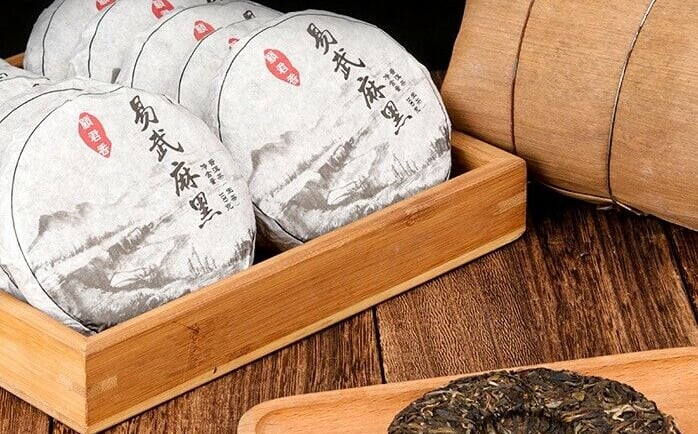Why Pu-erh Tea Is Considered the ‘Wine’ of Teas: The Fermentation Process Explained
Drinking Pu-erh tea is not just about drinking; it’s about appreciating the story in every sip.
PU ERH TEATEAHEALTH BENEFITHEALTHWINE


Why Pu-erh Tea Is Considered the ‘Wine’ of Teas: The Fermentation Process Explained
Pu-erh tea, a prized and ancient Chinese tea, holds a unique place in the tea world — often referred to as the “wine of teas.” This isn’t just a poetic nickname; it reflects the complex fermentation process, aging potential, and rich, evolving flavor profile that sets pu-erh apart from other teas. Much like fine wine, pu-erh improves with age, undergoes microbial transformation, and is often sought after by collectors and connoisseurs. But what exactly makes this tea so special? Let’s dive into the fermentation process that gives pu-erh its character and status.
What Is Pu-erh Tea?
Pu-erh (also spelled Pu’er or Puer) is a type of fermented tea originating from Yunnan Province in southwest China. It is made from the leaves of the large-leaf tea plant variety Camellia sinensis var. assamica. What distinguishes pu-erh from other teas is not just its origin, but its post-production microbial fermentation and aging process.
There are two main types of pu-erh:
Sheng (raw) pu-erh: This is the traditional form, which undergoes a natural, slow aging process over years or even decades.
Shou (ripe) pu-erh: A modern, accelerated version that simulates the aging process through an artificial fermentation technique developed in the 1970s.
The Role of Fermentation in Pu-erh
Fermentation is at the heart of what makes pu-erh tea unique. Unlike oxidation — a chemical process seen in black and oolong teas — fermentation involves microbial activity, similar to how yogurt, cheese, and wine are produced.
1. Microbial Fermentation
During fermentation, microorganisms such as bacteria, molds, and yeasts break down substances in the tea leaves. This transforms the flavor, texture, and aroma of the tea over time. In pu-erh, the microbes feed on polyphenols, amino acids, and sugars, producing complex chemical compounds that contribute to its earthy, mellow, and sometimes woody or fruity taste.
2. Aging Like Wine
Sheng pu-erh is stored under controlled conditions to age naturally, with environmental factors like humidity, airflow, and temperature playing key roles in the fermentation process. Over the years, the tea darkens in color, becomes smoother, and develops a more rounded flavor. Some aged pu-erh teas fetch high prices, much like vintage wines.
Shou pu-erh, in contrast, undergoes a process known as “wo dui” (渥堆), or “wet piling,” where the leaves are dampened and heaped in piles for several weeks to encourage rapid fermentation. This process reduces bitterness and mimics the effects of long-term aging in a short time.
Why Pu-erh Is Compared to Wine
There are several reasons why pu-erh is likened to wine — beyond its ability to improve with age:
1. Terroir and Origin
Just as wine reflects the terroir of its vineyard, pu-erh expresses the characteristics of its growing region — including soil, altitude, climate, and processing tradition. Tea from famous mountains like Bulang, Yiwu, or Nannuo commands higher prices, similar to wine from Bordeaux or Napa Valley.
2. Vintage and Storage
Collectors label pu-erh by its harvest year and sometimes even the specific factory and batch. Aged pu-erh teas are valued based on their vintage and the quality of their storage conditions — echoing the wine world's obsession with cellaring.
3. Flavor Evolution
Both pu-erh and wine undergo flavor transformations as they age. Young sheng pu-erh can be grassy or bitter, but over time it becomes smoother and more complex, developing notes of forest floor, dried fruit, or leather. Shou pu-erh starts out rich and earthy and also deepens with age.
Health Benefits of Fermented Pu-erh
Aside from taste and tradition, pu-erh is also known for potential health benefits, many of which are linked to its fermentation:
Gut Health: The probiotics formed during fermentation may support digestion and intestinal flora.
Cholesterol Control: Some studies suggest that pu-erh can help lower LDL cholesterol and increase HDL.
Weight Management: Pu-erh has been traditionally consumed to aid metabolism and fat breakdown.
Antioxidants: Despite fermentation, pu-erh still retains polyphenols that combat oxidative stress.
However, while promising, more large-scale clinical research is needed to confirm these effects.
Brewing and Enjoying Pu-erh
Pu-erh tea is typically sold in compressed cakes, bricks, or loose-leaf form. To brew it:
Break off a small portion (3–5g per cup).
Rinse the leaves with hot water to “wake them up.”
Steep multiple times using short infusions, especially with sheng pu-erh.
The flavor evolves over multiple infusions, revealing new layers — much like how a wine opens up in a glass.
Final Thoughts: More Than Just a Tea
Pu-erh is not merely a beverage — it's a living, evolving product steeped in history, craftsmanship, and patience. Its fermentation process sets it apart, giving it depth, character, and longevity that parallels fine wine. Whether you're a casual tea drinker or a curious collector, exploring the world of pu-erh offers a sensory journey that deepens with every cup and every year of aging.
In the modern health-conscious and culture-rich world, pu-erh continues to gain fans globally — not just for its taste and health benefits, but for the art and science behind its fermentation. Like the best wines, it’s not just about drinking; it’s about appreciating the story in every sip.
